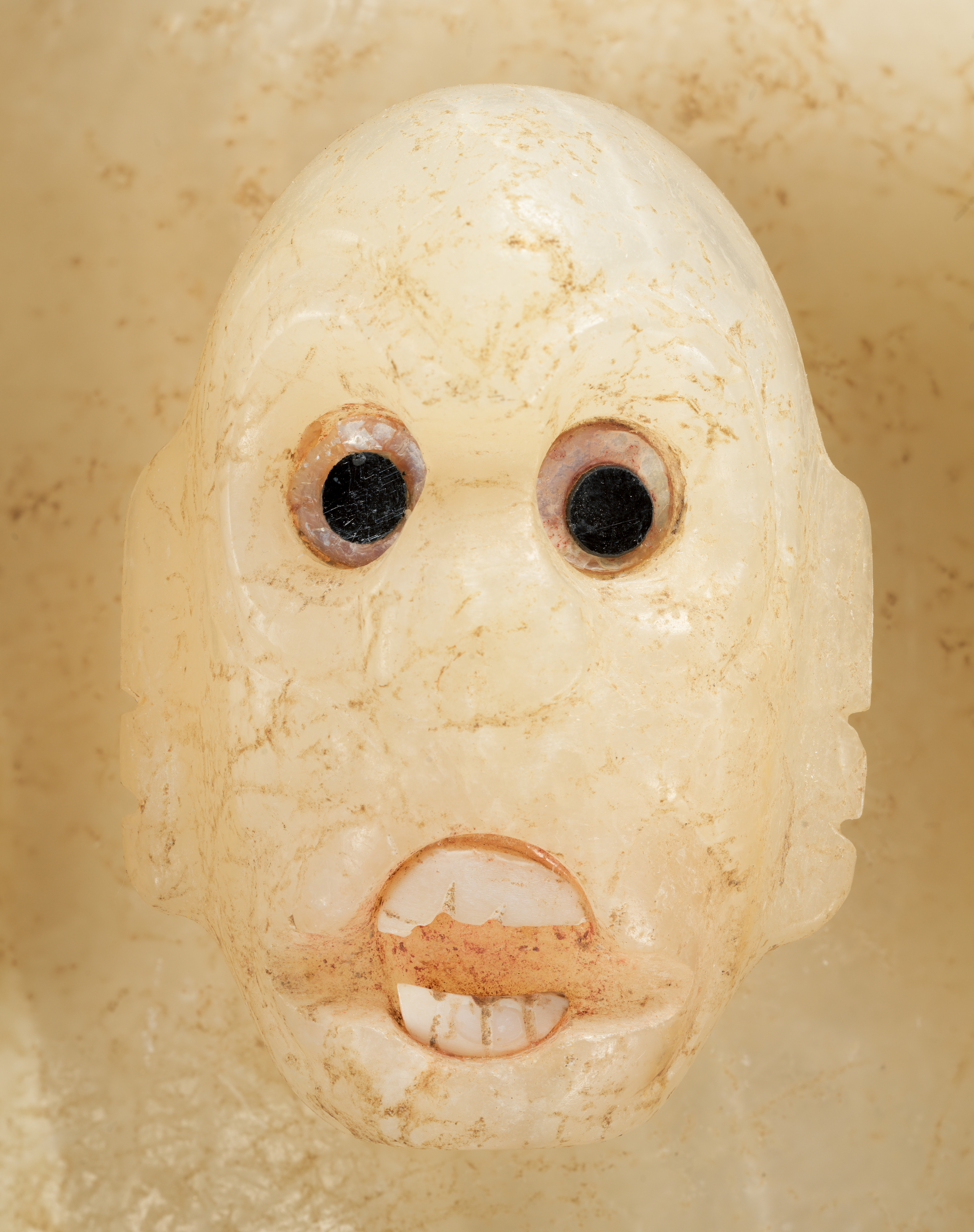Monkey Vessel
Not on view
The ancient Mexicans used many kinds of stone for the manufacture of ritual and sumptuary objects. Onyx marble, of which this vessel is carved, occurs in many parts of Mexico, where it is known as tecali. During the florescence of the great city of Teotihuacan in the first half of the first millennium A.D., tecali was used primarily to carve masks. Centuries later, perhaps a result of improved carving skills, lapidary artists were able to produce vessels from it, some plain and some effigy figures as here. A frequent subject of such bowls is a monkey holding its tail above its head. The vessel retains its globular form, the limbs, head, and tail projecting from it abruptly. The interior of the container was laboriously hollowed out with tubular drills, probably of bamboo, and then polished smooth. The eyes and teeth are inlaid with shell and obsidian. The function or meaning of the image is not known, although monkeys feature in creation myths of the Maya and Aztecs and were perceived as the originators of the performing and visual arts, perhaps because of their entertaining behavior.
Due to rights restrictions, this image cannot be enlarged, viewed at full screen, or downloaded.
This artwork is meant to be viewed from right to left. Scroll left to view more.




